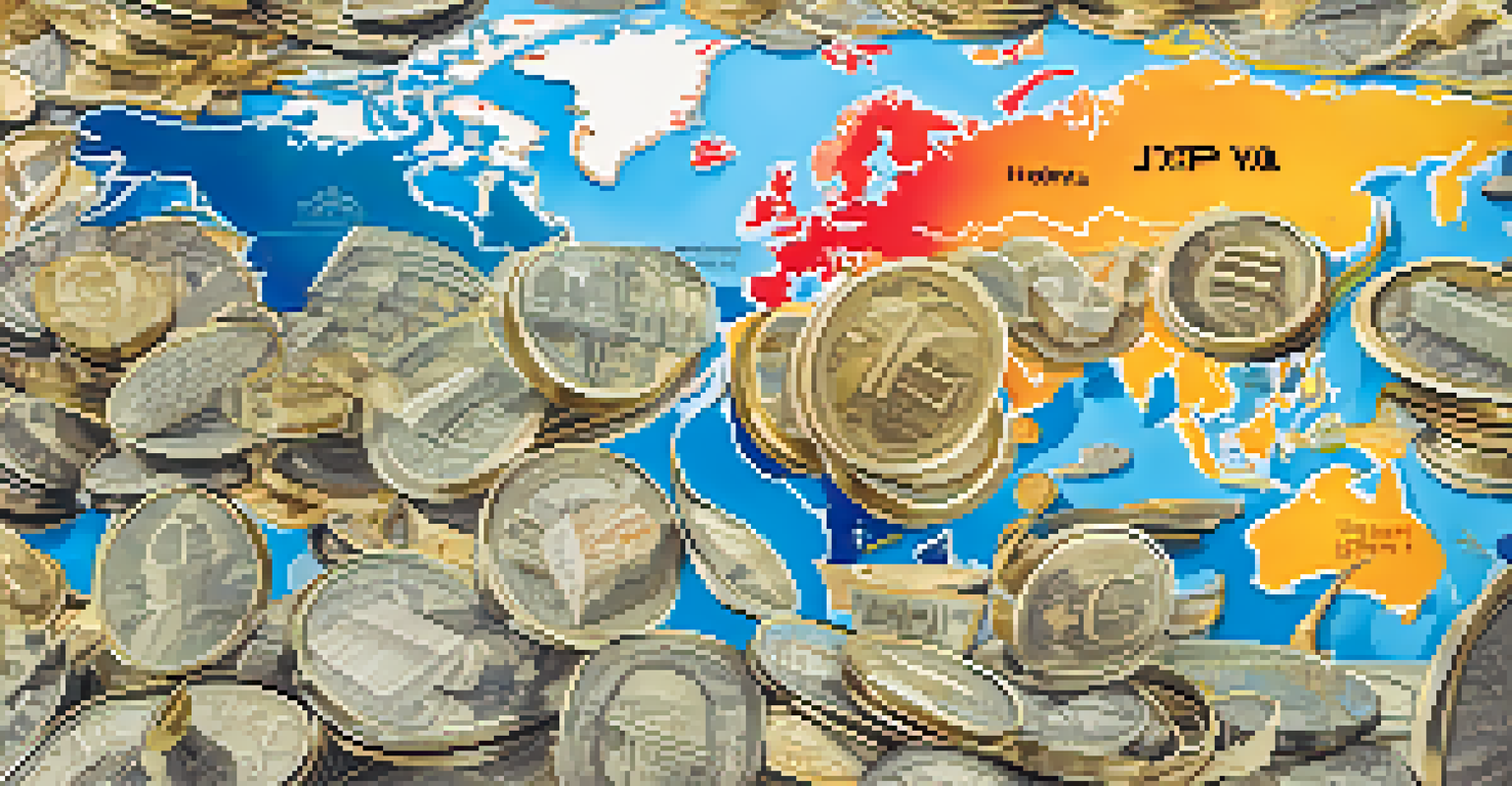Forex Markets: Understanding Currency Trading Dynamics

What is Forex and How Does It Work?
Forex, short for foreign exchange, refers to the global marketplace where currencies are traded. It operates 24 hours a day, five days a week, making it one of the most dynamic markets in the world. Traders buy and sell currency pairs, like the euro against the dollar, based on their expectations of economic trends and geopolitical events.
In investing, what is comfortable is rarely profitable.
Imagine Forex as a bustling marketplace where every currency is a product on display. Traders exchange their local currency for foreign currencies, which affects the exchange rate. These rates fluctuate constantly due to supply and demand, influenced by factors like interest rates, economic indicators, and political stability.
Understanding how Forex operates is crucial for anyone looking to engage in currency trading. The market's liquidity allows for quick transactions, but it also means that prices can shift rapidly, presenting both opportunities and risks for traders.
Key Players in the Forex Market
The Forex market is filled with various participants, each playing a unique role. Key players include central banks, financial institutions, hedge funds, corporations, and individual retail traders. Central banks, for instance, influence currency value through monetary policy, while corporations may engage in Forex to facilitate international trade.

Think of these players as different characters in a play, each with their own motivations and strategies. For example, a corporation may need to convert its earnings from foreign markets back to its local currency, impacting demand for that currency. Meanwhile, individual traders might speculate on currency movements to make profits.
Understanding Forex Basics
Forex, or foreign exchange, is the global market for trading currencies, operating 24/5 and influenced by economic trends.
Understanding these players helps traders anticipate market movements. By knowing who is influencing the currency pairs, traders can make more informed decisions and adapt their strategies accordingly.
Understanding Currency Pairs and Quotes
In Forex, currencies are traded in pairs, such as USD/EUR or GBP/JPY. The first currency in the pair is known as the base currency, while the second is the quote currency. The exchange rate tells you how much of the quote currency you need to buy one unit of the base currency.
Risk comes from not knowing what you’re doing.
Imagine you’re at an airport exchanging money. If you see a sign that says USD/EUR = 0.85, it means you need 0.85 euros to buy one US dollar. This is the essence of currency trading, where traders bet on the value of one currency against another.
Understanding how to read currency quotes is foundational for any Forex trader. This knowledge allows traders to identify potential trades and make educated guesses about future price movements.
Factors Influencing Currency Prices
Currency prices are influenced by a multitude of factors, including economic indicators, interest rates, and geopolitical events. Economic indicators such as GDP growth, employment rates, and inflation provide insight into a country's economic health, which can affect its currency's strength.
Consider interest rates: when a country's central bank raises rates, it often leads to an influx of foreign capital, driving up the currency's value. Conversely, political instability or economic downturns can lead to a decline in currency value as investors seek safer assets.
Key Players Affecting Forex
Various participants, including central banks and retail traders, impact currency values through their trading activities.
By keeping an eye on these factors, traders can better predict currency movements. This understanding is crucial for developing a successful trading strategy in the ever-changing Forex landscape.
Technical vs. Fundamental Analysis in Forex
In Forex trading, two primary analysis methods help traders make decisions: technical and fundamental analysis. Technical analysis involves studying price charts and patterns to predict future movements, while fundamental analysis focuses on economic indicators and news events.
Think of technical analysis as reading a map to navigate the market's twists and turns. Traders look for patterns, support and resistance levels, and trends to guide their trades. On the other hand, fundamental analysis is like keeping an eye on the weather before a journey; it helps traders anticipate market shifts based on economic data.
Both methods have their merits, and many successful traders use a combination of the two. By blending technical insights with fundamental understanding, traders can create a more comprehensive view of the market.
Risk Management Strategies for Forex Traders
Risk management is a critical component of successful Forex trading. Given the market's volatility, implementing strategies to protect investments is essential. Common risk management techniques include setting stop-loss orders, diversifying trades, and only risking a small percentage of your trading capital on any one trade.
Imagine you’re on a tightrope; without a safety net, a single misstep could lead to a significant fall. In Forex, stop-loss orders act as that safety net, automatically closing a position if it moves against you beyond a certain point. This helps traders minimize losses and protect profits.
Importance of Risk Management
Implementing risk management strategies, such as stop-loss orders, is essential for protecting investments in the volatile Forex market.
By prioritizing risk management, traders can maintain a more sustainable approach to Forex trading. This not only safeguards their capital but also allows them to trade with greater confidence.
The Importance of a Trading Plan
Having a solid trading plan is crucial for success in the Forex market. A trading plan outlines your goals, risk tolerance, and strategies, serving as a roadmap for your trading journey. Without a plan, traders may find themselves making impulsive decisions based on emotions rather than logic.
Think of a trading plan as a recipe for a successful dish. Just as a chef follows a recipe to create a delicious meal, a trader should adhere to their plan to achieve consistent results. It helps keep emotions in check and provides clear guidelines for entering and exiting trades.

Regularly reviewing and adjusting your trading plan based on performance and market conditions is also vital. This adaptability allows traders to stay aligned with their goals while navigating the ever-evolving Forex landscape.